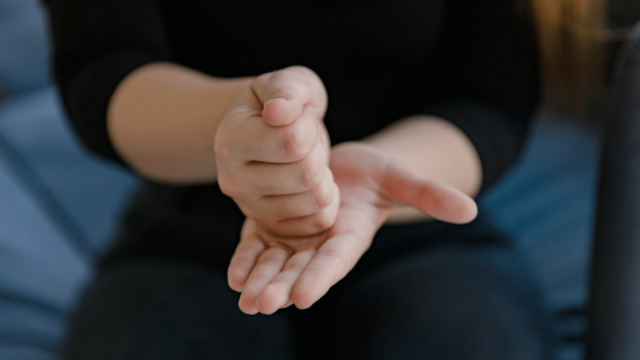Sign language is an essential communication medium, especially for people who cannot communicate using verbal forms of interaction. In India, sign language has evolved over the past ten decades, although not many people communicate using it. However, today there are more than 70 million deaf people worldwide, and they use more than 300 different sign languages. Understanding sign language is, therefore, a great asset that can help individuals broaden their communication skills and eliminate communication gaps with those who are not blessed with verbal skills. As a result, 23rd September is commemorated as International Day of Sign Languages every year.
In collaboration with The Channel 46, Arpita Singha Chowdhury, Audiologist and Speech Pathologist, Fortis Hospital, discusses the purposes of sign languages, things you need to know about it, and a few primary sign languages that you should be aware of.
Purposes Of Sign Languages
It aims to bridge the gap between individuals who can and cannot hear and communicate verbally.
In India, sign language was developed to have a structured and organised way of communication for people who are deaf or unable to speak. It aims to bridge the gap between individuals who can and cannot hear and communicate verbally. Like other sign languages, the Indian sign language can also be used by everyone to reach the broader needs of societies. It can be used when a spoken word is physically impossible, such as talking underwater, talking through glass, from a distance, at a loud music concert, in noisy market areas or having private conversations in a public place.
4 Points You Need To Know About Sign Language
For the deaf community, sign language is probably the only way to communicate with others. It is considered their native language, which gives them full access to speaking and understanding each other.
- The most prominent part of sign language is hand and arm movements, coupled with body gestures and facial expressions that significantly deliver a successful and meaningful sentence.
- Facial words in sign language can express both emotion and grammatical information. For instance, one’s eyebrows can be raised and lowered to change the structure of a sentence from a statement to a question.
- An incorrect facial expression or a blank face will only make the signs convey something completely different to what you mean.
- Whenever a person uses sign language, he/she must be engaged in constant eye contact with the person to whom they are speaking.
Primary Sign Languages That You Must Be Acquainted With
Here are a few primary sign languages we can quickly learn and incorporate into our daily lives.
1. Hi/Bye, I/You, Yes/No
These are a few common signs everyone must know. These are simple gestures where you wave your hand to say hi or bye, point towards yourself or the person to indicate I or you, and nod your head vertically or laterally to say yes or no.
2. Indian/India
To say that you are an Indian or you are from India using sign language, you have to make a fist and take out your thumb and do the sign of putting a tilak on your forehead with the thumb.
3. Good/Bad, Correct/Wrong
Here, you do a thumbs up to say good, or thumbs down to point out something that is inaccurate. You can also communicate the same by making a ‘tick’ sign in the air, which would mean correct and make a ‘cross’ in the air to tell bad.
4. Thank You
Extend your fingers and thumb to make a ‘thank you’ sign. To do this, touch your fingers to your chin and bring your fingers forward. This sign is almost like you are blowing a kiss out to thank the person, but the sign is a bit lower. Similarly, extending both hands will be a sign of ‘thank you’ too.
5. Welcome
Welcome is signed by holding your hand up around shoulder level, palm facing up and slightly curved, then bringing it closer towards your chest.
6. Please
To say a ‘please’ to anyone, take your dominant hand with fingers extended and held together. Now with your thumb extended and sticking out, take the hand with the palm facing in, and rub it in a circle on your chest.
7. Sorry
To apologise to anybody using sign language, you must make a fist with your hand and rub it on your chest. Your facial expressions shouldn’t be pleased or blank while apologising, and they should be in tangent with your emotion of feeling sorry.
Open up like never before and participate in conversations about beauty, entrepreneurship, mental health, menstrual & sexual health, and more. Desi women, join our community NOW!


